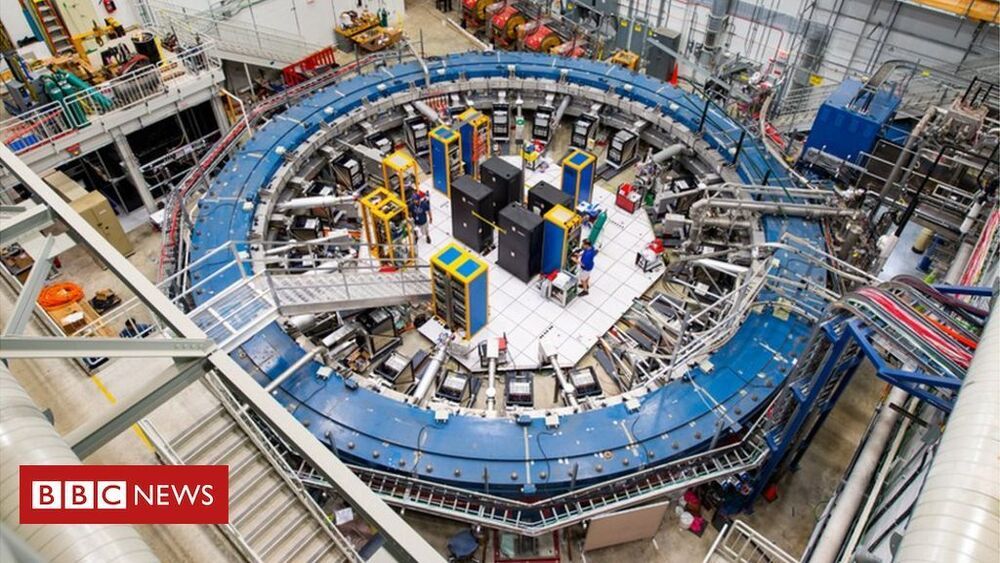It’s not the next Higgs boson — yet. But the best explanation, physicists say, involves forms of matter and energy not currently known to science.



Researchers have used a quantum mechanical property to overcome some of the limitations of conventional holograms. The new approach, detailed in Nature Physics, employed quantum entanglement, allowing two photons to become a single “non-local particle.” A series of entangled photon pairs is key to producing new and improved holograms.
Classical holograms work by using a single light beam split into two. One beam is sent towards the object you’re recreating and is reflected onto a special camera. The second beam is sent directly onto the camera. By measuring the differences in light, its phase, you can reconstruct a 3D image. A key property in this is the wave’s coherence.
The quantum hologram shares some of these principles but its execution is very different. It starts by splitting a laser beam in two, but these two beams will not be reunited. The key is in the splitting. As you can see in the image below, the blue laser hits a nonlinear crystal, which creates two beams made of pairs of entangled photons.



Sea salps — gelantinous, marine organisms that look like jellyfish — have clogged water systems used to cool nuclear reactors in South Korea, forcing two units offline.
It’s the second time in less than three weeks Korea Hydro & Nuclear Power Co. shut the Hanul No. 1 and No. 2 units, after salps clogged water intake valves. The reactors, which each have a capacity of 950-megawatts, resumed operation last week before shutting again Tuesday.


Summary: Combining artificial intelligence technology with brain scan data, researchers have identified three novel subtypes of multiple sclerosis.
Source: UCL
Scientists at UCL have used artificial intelligence (AI) to identify three new multiple sclerosis (MS) subtypes. Researchers say the groundbreaking findings will help identify those people more likely to have disease progression and help target treatments more effectively.

Delaying, Detecting, Preventing and Treating Aging And Associated Diseases — Dr. Brian Kennedy, Ph.D., National University of Singapore.
Dr. Brian Kennedy is Distinguished Professor, Department of Biochemistry and Physiology, Yong Loo Lin School of Medicine, National University of Singapore (NUS), Director of National University Health System (NUHS) Centre for Healthy Ageing, Singapore, Professor, Buck Institute for Research on Ageing, Adjunct Professor, Leonard Davis School of Gerontology, USC, and Affiliate Faculty, Department of Biochemistry, University of Washington.
With a Ph.D. in Biology from Massachusetts Institute of Technology (MIT), research in the Kennedy lab is directed at understanding the biology of ageing and translating research discoveries into new ways of delaying, detecting, preventing and treating human ageing and associated diseases.
Current research projects in Dr. Kennedy’s lab include systems biology strategies to understand ageing and murine longevity studies and disease models.
Dr. Kennedy has published over 80 manuscripts in prestigious journals including Cell, Nature, Science, Genes & Development, and PNAS and serves as a Co-Editor-In-Chief at Aging Cell.
You hear so much about the wonders of coffee, that I decided it was time to even the score.
Tea Is Fantastic.
I for one, am a massive fan of the humble cuppa, but now there seems to be method to my madness after all.
Whatever the type, it seems there are benefits galore.
So what are you waiting for…?
Put the kettle on!!
And if you want to find out more about how important sleep really is, why not check out this video next…